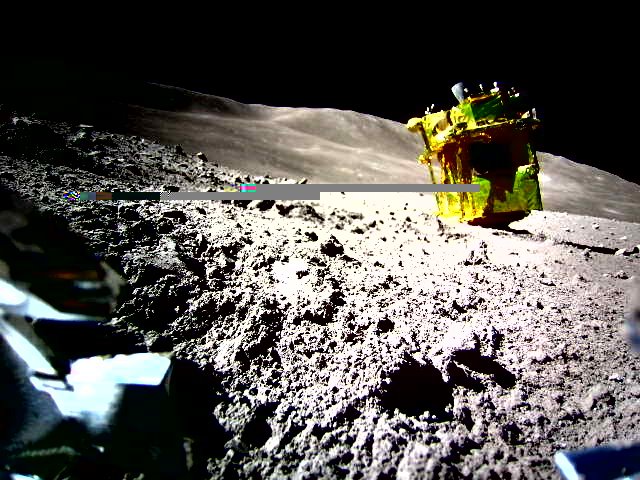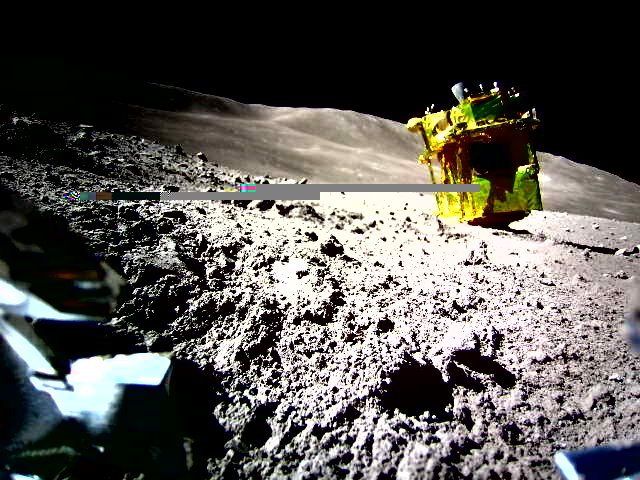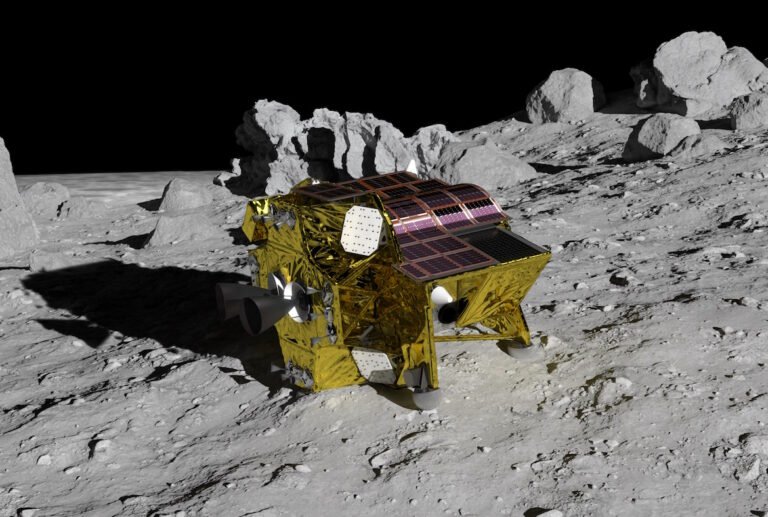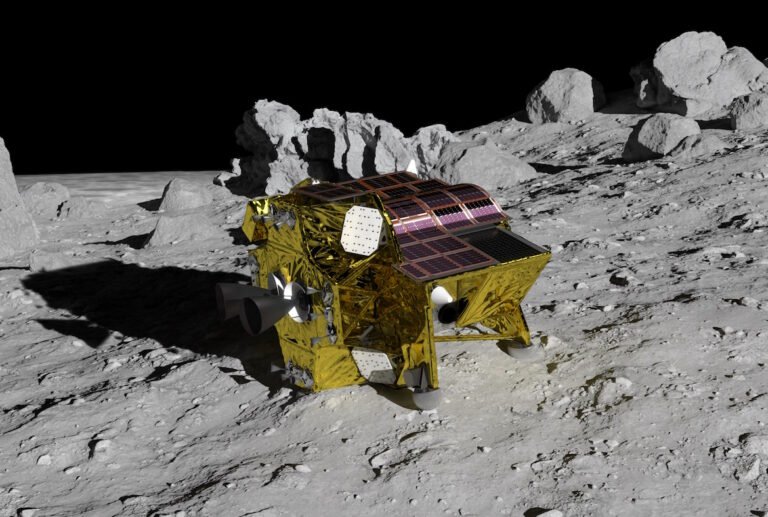
The Japan Aerospace Exploration Company shared the first image of its lander on the lunar surface, revealing that the spacecraft touched down on the moon upside-down.
It’s a remarkable recovery for the spacecraft, which experienced an “abnormality in the main engine” that affecting the landing orientation when it was just 50 meters above the lunar surface, JAXA said in an update Thursday.
Remarkably, the lander ended up just 55 meters east of the original target landing site.
The lander was carrying two rovers; one of the rovers, called Lunar Exploration Vehicle-2, or SORA-Q, is responsible for the photo.
The rovers were ejected from the spacecraft before landing.

The Japan Aerospace Exploration Company shared the first image of its lander on the lunar surface, revealing that the spacecraft touched down on the moon upside-down.
It’s a remarkable recovery for the spacecraft, which experienced an “abnormality in the main engine” that affecting the landing orientation when it was just 50 meters above the lunar surface, JAXA said in an update Thursday.
Remarkably, the lander ended up just 55 meters east of the original target landing site.
The lander was carrying two rovers; one of the rovers, called Lunar Exploration Vehicle-2, or SORA-Q, is responsible for the photo.
The rovers were ejected from the spacecraft before landing.

Japan’s first lunar lander has officially powered down on the moon after its solar cells were unable to generate electricity, though the nation’s space agency said there is a possibility of turning things around when the direction of the sun’s rays change.
Japan made history last week when its lander, called Smart Lander for Investigating Moon (SLIM), successfully touched down on the moon’s surface last week.
Shortly after landing, directors of the mission explained that while the soft landing was a minimal success, the spacecraft’s solar cells were not generating power.
“According to the telemetry data, SLIM’s solar cells are facing west,” the Japan Aerospace Exploration Agency (JAXA) said in the update.
Japan can count a handful of other major wins in the mission, even if the solar cells never manage to charge up sufficiently for a recovery operation.

Japan’s long-planned Smart Lander for Investigating Moon has successfully touched down on the lunar surface, making the nation the fifth in history to do so.
But all is not well for SLIM, which may have a limited lease on life due to trouble with its solar cells.
In a press conference following the early-morning (local time) landing on the Moon, the directors of JAXA and the mission explained that “The soft landing was itself successful; SLIM has been communicating and it receiving commands.
However, as the other sensors are working correctly and showing healthy values, they feel confident it is limited to the solar cells themselves.
The initial press conference was primarily to announce the initial success of a soft landing and functioning lunar lander.







